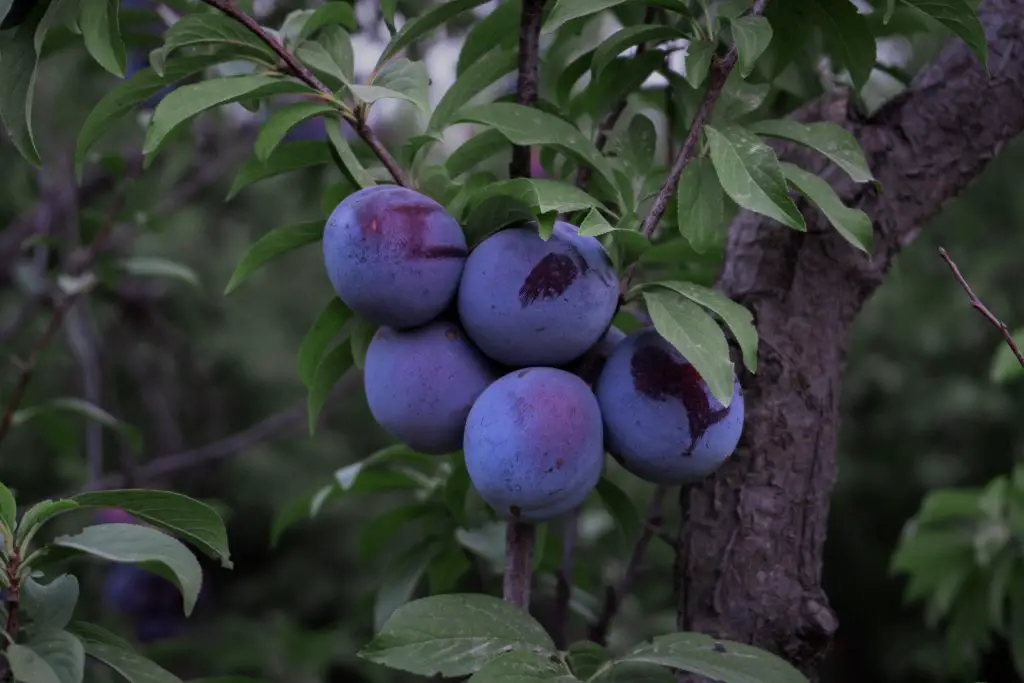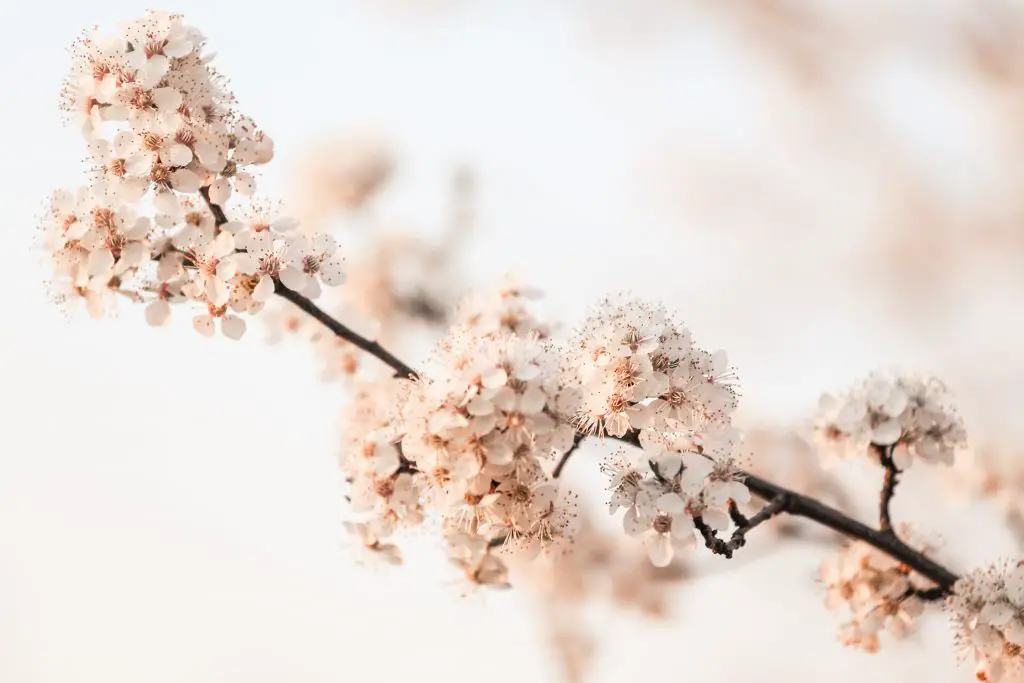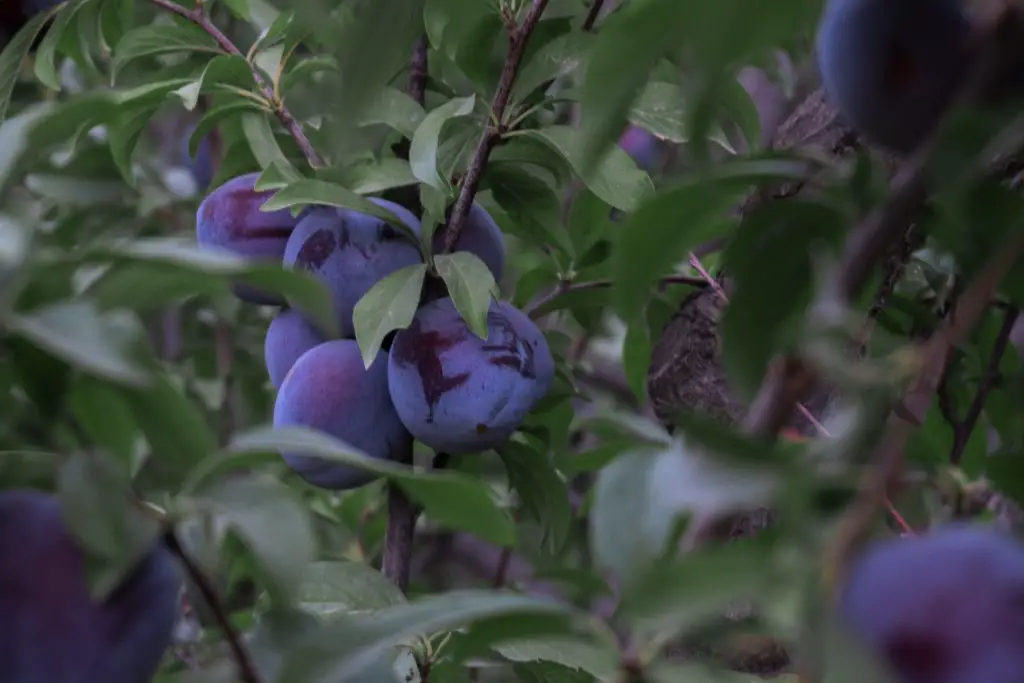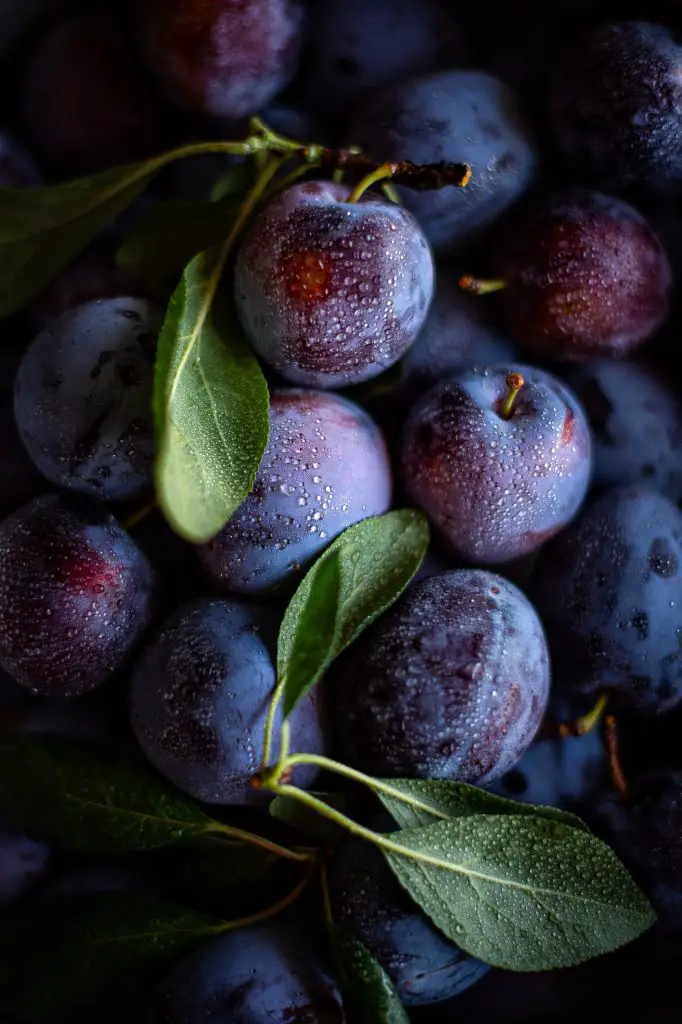When Do Plum Trees Bloom? The blooming of plum trees is one of the most eagerly anticipated periods of the year for those that love their flowers and fruit. But when does it happen and does the type of plum tree matter?
There are two types of plum tree, European and Japanese, that fruit at slightly different times of the year. According to an article published in the Research Institute for Fruit Growing Pitesti, Romania Japanese varieties flower in the early to mid-march whereas European varieties flower in early April (in the northern hemisphere). However, the precise timing of the flowering is affected by the specific climate.
An example of the degree of variation is shown in a Spanish study that looked at a range of Japanese cultivars and found that the flowering period started at the beginning of March and typically lasted 20 days or so. Conversely in the much cooler climates of Norway European plums typically appear in early May.
However, it was noted in a 2019 Norwegian study that the timing of the flowering had advanced by around 10 days over the last 30 years due to the impact of climate change. This was positively impacting the yields of the trees plum trees in this region but would, no doubt, negatively affect production in other parts of the world. To read more about the yield of plum trees click here.

What Is The Difference Between European And Japanese Plums?
There are about 6,000 plum cultivars belonging to around 30 species of trees that originated from Europe, Asia, and America. However, the two most important species that are widely used in commercial production are the European plum (Prunus domestica) and the Japanese plum (Prunus salicina).
As the European and Japanese plums are the same genus, Prunus, they are closely related however they produce distinctly different plums that are marketed separately and have different environmental requirements.
European Plums
European plums, as the name suggests are the most important plum type in Europe. This species is grown in cooler areas and is considered “a high chill” variety (discussed later in the article) requiring 700 to 1000 chill hours to produce a successful crop. European varieties can be grown in zones 3 to 9.
European Plums can be divided into several groups based on the characteristic of the fruit, these groupings include plumes, prunes, greengages, and Mirabelles. The fruits are round to oval and come in a range of different sizes and colors.

Japanese Plums
Despite the name, the Japanese plum actually originated in China in the Yangtze River Basin area. The tree was transported to Japan and has been cultivated there for around 2000 years. This species performs better in warmer climates and is suitable for zones 4 to 10 which is why it was transported to California in the 1870’s.
The well-known plum breeder Luther Burbank then developed a range of new cultivars that have become the basis of the fruit industry today. These varieties require 500 to 700 chill hours in most cases to produce a successful crop.
However, it is important to note that the Japanese Plums produce crops in alternating years, unlike European Plums which produces a crop every year.
What Are Chill Hours?
Chill hours are an important consideration when selecting the type of plum tree to grow and is a limiting factor that governs the suitability of Plums, and all stone fruit for that matter, in a given location. For Plums to produce a successful crop the tree needs to be exposed to a period of cold, without a sufficiently long period of cold the plant will not produce Plums.
The period of cold, which is sometimes referred to as ‘chill’ hours, is the number of hours the tree is exposed to temperatures below 7°C (45°F). European Plum varieties generally require between 700 and 1,000 chill hours whereas Japanese Plum varieties require 500 to 700 chill hours.
To estimate the number of chill hours take the average maximum temperature of the coldest month in your location and compare it to the table below.
Chill Hours Average Temperature For Coldest Month
0 19.7°C (67.5°F) – No Chill
300 15.5°C (59.9°F) – Low Chill
330 15.3°C (59.5°F) – Low Chill
450 14.0°C (57.2°F) – Medium Chill
500 13.6°C (56.5°F) – Medium Chill
520 13.1°C (55.6°F) – Medium Chill
600 12.7°C (54.9°F) – Medium to High Chill
800 10.2°C (50.4°F) – High Chill
1100 7.9°C (46.2°F) – High Chill
1250 0.0°C (32.0°F) – Very High Chill
Aside from the chill hours, the other important consideration is the timing of the last frost. Late frosts can damage fruiting spurs, buds, and flowers which will affect the yield. If your area is prone to late frosts I would be leaning toward planting European Plums as they produce flowers later.
The effect of late frosts can be mitigated by covering the tree with frost blankets which are available on Amazon. Click here to see the latest price. To read more about the precise temperature at which buds and flowers are affected click here.

How To Plant Plum Trees
If you decide to add a plum tree it is necessary to select two different cultivars as plum trees require cross-pollination. However, it is important to note that the two cultivars need to be of the same type, ie 2 European trees or 2 Japanese trees. The reason for this is that the two types of trees have different numbers of chromosomes and will not cross-pollinate.
The best time of year to purchase fruit trees is in winter or early spring when the tree is still is dormant. At this time of year, trees are available as bare-rooted plants which are significantly cheaper to purchase.
Once you have purchased a tree the next important step is to select a location. It is best to select a warm, sheltered location that gets at least 8 hours of sun a day. If possible avoid locations that are known frost pockets as this will increase the probability of getting hard late frosts. The next step is to prepare the soil by adding plenty of organic matter such as compost or well-rotted manure which should be well mixed into the soil.
Dig a planting hole for the tree approximately 1 ft (30 cm) wide by 1 ft (30 cm) deep and place the tree in the hole at the same height that it was previously in the soil making sure that the graft union is around 2 inches (5 cm) above the ground. Backfill the hole with soil firming it in around the root ball to ensure that there are no air pockets present.
Water the plant thoroughly and add a thick layer of mulch around the base of the tree, as this will help prevent moisture loss and suppress weeds. However, when doing this it is important that the mulch does not come into contact with the truck of the tree as this has the potential to cause collar rot.

Pruning The Plum Tree
Once the tree has been planted the next important step is to prune it as this will help to determine the tree’s structure and encourage the production of new shoots. For a stand-alone tree, the ideal shape is a vase as it maximizes light and air. To create this shape it is best to cut the branches around 1 ft above where the branches fork from the main stem, just above an outward-facing bud.
This cut in winter will result in multiple stems being produced. The following year the process should be repeated with any inward-facing branches being removed in order to maintain the desired vase shape.
The alternative to a free-standing tree is to espalier the trees. The advantage of this type of pruning is that it will keep the tree compact making it easier to net and pick fruit. There are many different types of espalier patterns that can be created however the most common is a T-shape structure.
To create a T-shaped pattern a support structure is required to enable the tree to be trained. This can be done either with wires strung vertically between 2 posts at a spacing of around 1 ft (30 cm) or using a trellis of some sort.
Once the support structure has been erected and the tree has been planted halfway between the two posts the main branch should be cut at the height of the first wire in winter and all other branches should be removed. This cut will result in three shoots being generated through the following spring and summer.
The two side shoots should be tied down to the first wire creating the first tier of the structure. The central leader should be left until the following winter where it is cut at the height of the second vertical tier. This will encourage the tree to produce new shoots allowing the second tier to be created and so on…….. To learn more about how to create an Espalier, click here.
Summer pruning will also be required for all shapes of trees as thin whippy growth will be produced. This type of growth is unable to carry the weight of all the fruit and should be cut down to 4 to 5 buds. This process over several seasons will allow the tree to carry a large volume of fruit.
